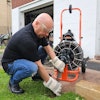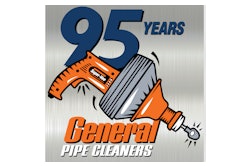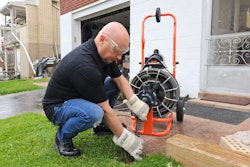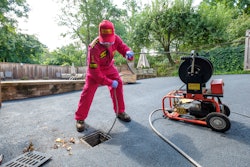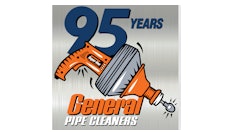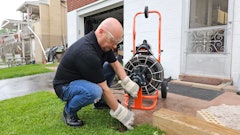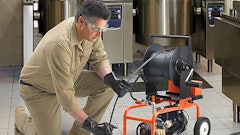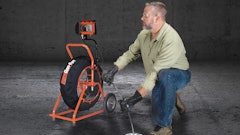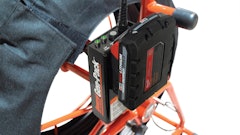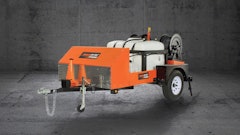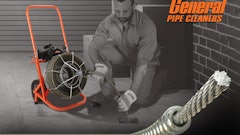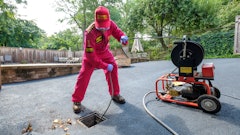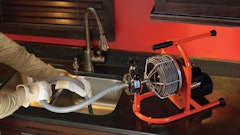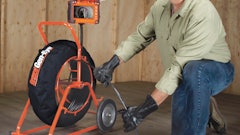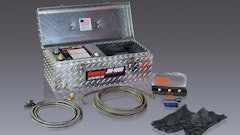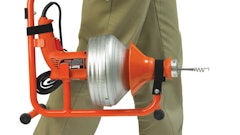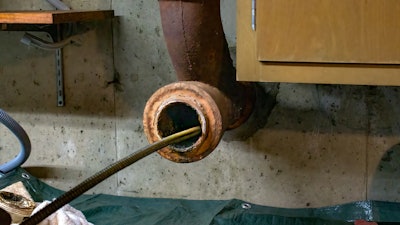
When drains are clogged, life can't go on as normal. Someone can't live in the house long-term. People can't flush the toilets. Normal life is as stuck as the water. As such, building owners are willing to call your customers and pay top dollar to open their drain. About half that time, the service finds something in that drain which causes to return to the business/homeowner informing them of the reason behind continuing issues: "You have this going on too."
Punching through the clog and getting that water flowing again isn't the end of the story - it's just the beginning. Maybe they make that sale or not—water jetter drain cleaning equipment plays a big role in this situation. Sure the drain is open, but discovering the cause can discover any systemic problems. This is when that company calls your rental shop.
While similar to their mechanical snake counterparts, jetters are a different class of pipe-cleaning equipment. We're not talking about massive 36-in. culverts but in the 3, 4- to 10-in. pipe range connecting a building to a municipal or septic system. Your customers are already coming in renting the equipment needed to work on these smaller to medium drains - there's a good chance you have a good idea of who in your market would be a good candidate.
It's recommended to also send a camera into the piping to inspect the drain and get a clear picture of what's going on. This should allow customers to be able to inform theirs of any issues that may cause problems to reoccur. A snake machine would chop through the obstruction, grab something, or push it downstream, but it's not going to clean the drain—there may be a lot of stuff going on to keep them from seeing the true state of the pipe: cracks, roots, and other points of infiltration.
This leaking adding more water into the draining system than necessary is actually a significant problem in the country. "We haven't been spending enough money on our infrastructure," says Dave Dunbar, Customer Success Specialist at General Pipe Cleaners (General Wire Spring Company). "We need to spend some money on sewage treatment and the whole system—essentially because it leaks like a sieve and overflows every time it rains. We end up with polluted stuff in our waterways, which isn't good. What the EPA finds very easy to do is say to plumbers and drain cleanings, 'if you see a leaky pipe - replace it.' That's easier said than done." There are trillions and trillions of dollars worth of infrastructure repairs that should be done in the next 20 years to alleviate this problem. In order for these drain cleaners to be effective, many situations will need a jetter to clean the inside of the pipe to the point where they can get a good inspection.
Sizes
Water-jet drain cleaning equipment are available in different sizes to match the market, customer, and job. Larger, tow-behind trailer jetters can run up to $26,000 to $27,000. Depending on maintenance and how it's treated, the machine should last 10 to 20 years.
Smaller jetters come with two and four wheels for maneuverability to be able to be used anywhere. Electric versions draw 13 amps. Not as powerful as their larger counterparts, they typically were not designed to clear the drain. About half to 3/4 of clogs blocking up today's drains are within 10-15 ft. of the kitchen sink, "small is the next big thing in jetting," says Dunbar. The return on investment, he claims, is similar to post-hole diggers.
While a snake can open the drain, (should the owner continue their ways) these drains are likely to "heal" and back up again. When homeowners and restaurants just need to be up and running again, they won't be interested in replacing anything - a small jetter can be effective to blow away the grease and flush the sludge down the system.
Maintenance
Just like every other asset in the fleet, rental shops will need to have a clear idea on how to do preventative maintenance and what can go wrong. Many manufacturers can help with this. They even may have videos on fixing issues in a way to help rentals save money.
The pumps used for drain cleaning tend to be triplex - plunger style pumps that develop a high pressure from three pistons working in sequence to even the outflow. These pumps have a crankcase of ceramic-style cylinders to push the water, valves, and seals around the plungers to keep the oil and water segregated. Check the oil once every time the machine comes back in, there's usually a sight glass on the back. If it looks milky, your seals are failing - water is getting into the oil. It's similar to pressure washers.
"It's really important to do a physical inspection of the hose," says Dunbar. He recommends that rental shops do more than a cursory glance at the hose; make sure the hose is in good shape, especially the front and back parts where it is most vulnerable.
Pro Tips:
- Keep nozzles clean. These tend to become clogged should impurities get into the water supply. Pressure can skyrocket if the nozzle is clogged and cycles, where its pressure will spike, reduce, and then return. If it's cycling, it's vital to take the nozzle off first to avoid pushing the obstruction further into the hose.
- Should it be needed, remind your customers to remove the nozzle off away from the drain.
- When the camera is run into the drain, remind customers to back the camera out before digging and cutting through the pipe. No one wants to cut off the camera head, but accidents happen.
- Track hours used. Where trailer-mounted jetters may have an integrated hour meter, smaller machines do not. Use this estimation on when to change the oil.


